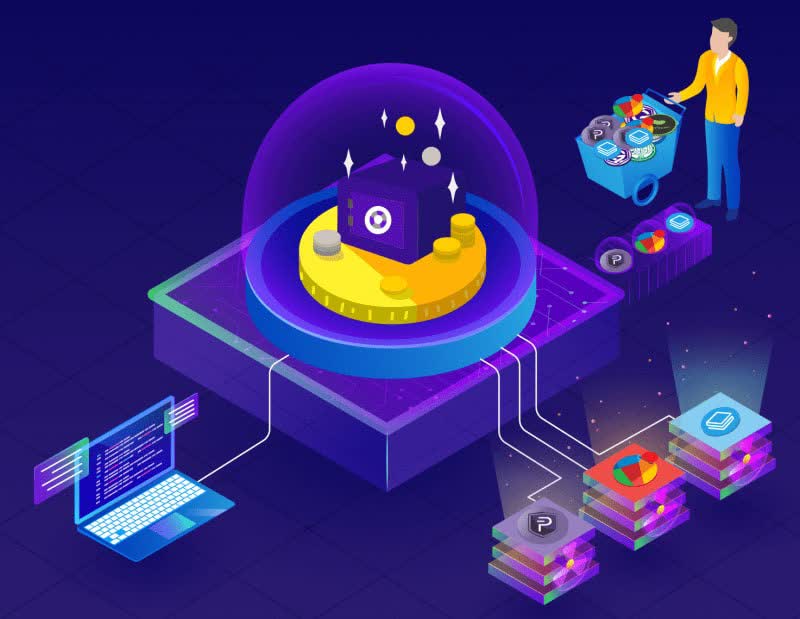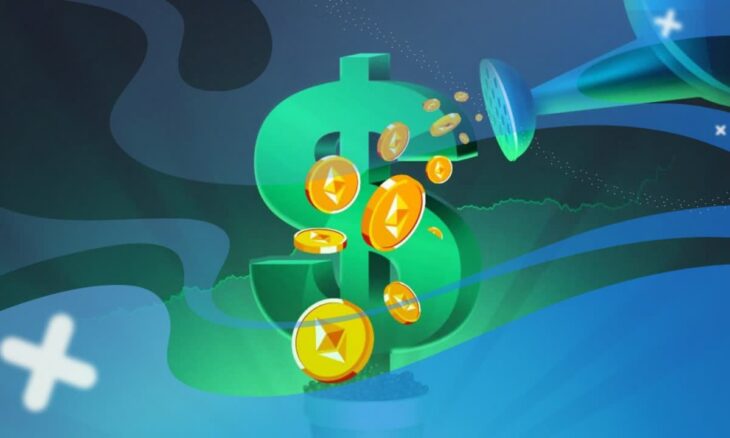THE CURIOUS CASE OF YIELD FARMING
[PART 1]
All About Staking & Farming
Today we will take a look at several cryptocurrency farming platforms and review various strategies for successful farming that can be used (especially during a bear market).
We will consider all the issues related to the topic of farming and staking coins: where, on which platforms you can successfully farm, which strategy for farming has proved to be the most effective, and which of them are best suited to your goals, and so on.
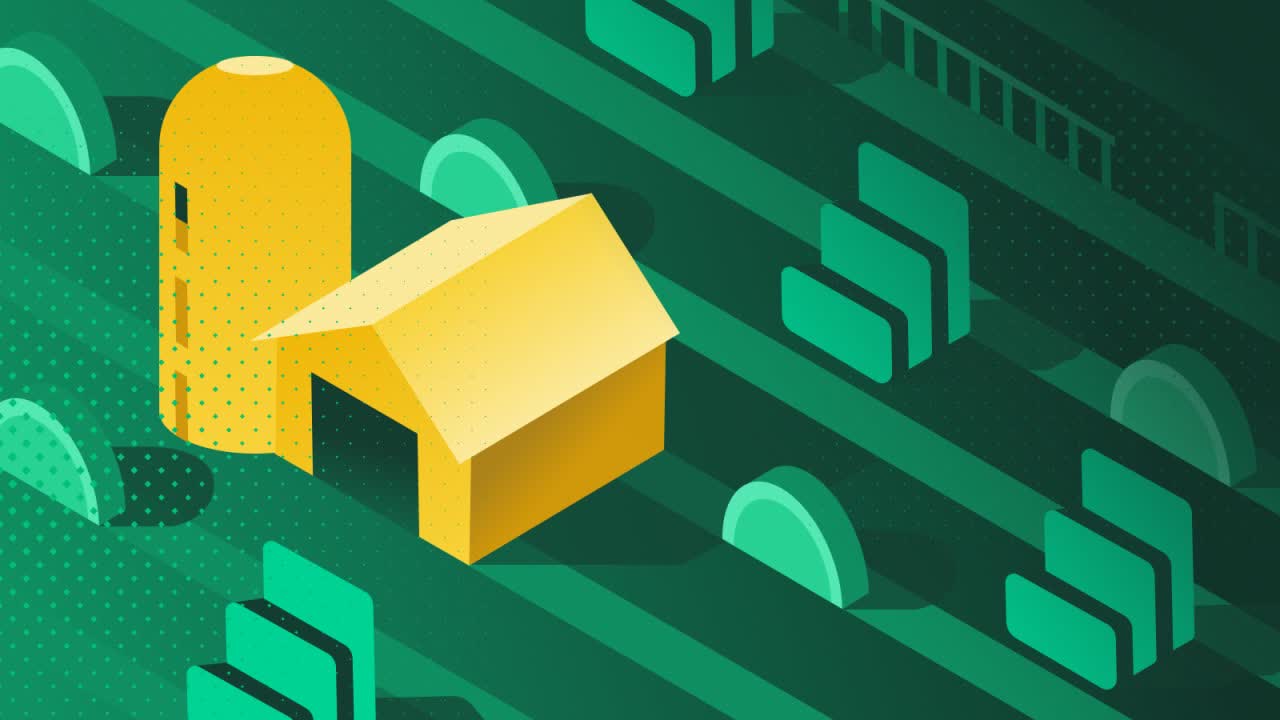
On the topic of cryptocurrency farming, we first need to talk about decentralized exchanges (DeFi) where people can buy or sell their cryptocurrency.
In order to perform a ‘swap’ on such an exchange, one user needs to have some kind of cryptocurrency (the asset that must be exchanged) and when exchanging this user needs to receive another cryptocurrency in return.
In other words, to make a successful exchange, these people need “liquidity” – that is, another cryptocurrency they want to buy/sell.

One click - and our coins are happily swimming in the liquidity pool, to make other people feel great...
That is, they will give one token (someone will have to take it from them) and they want to receive someone else’s token (that is, this second token must also be given to them by someone).
Accordingly, we (as liquidity providers) can help them with our own assets in this exchange, and therefore, earn from this.
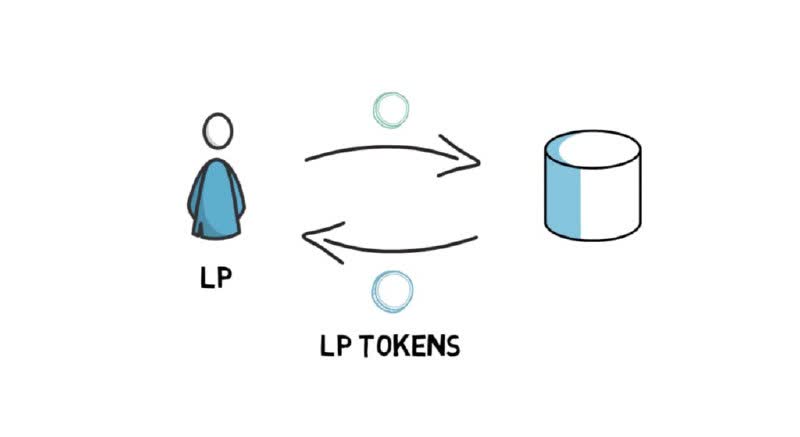
LP Tokens in work
These earnings are a kind of reward for giving people our tokens for use, providing liquidity, and when performing any trade operation on our coins, the exchange participants pay a certain commission from each transaction, and then…we receive this commission since we have provided them with this “liquidity”.
In other words, imagine that a person makes an exchange and at this moment two additional commissions are debited from him.
The first commission is the network commission (for the fact that the blockchain has done its work by executing a smart contract), and the second commission is the commission that the platform itself pays to us, as liquidity providers.
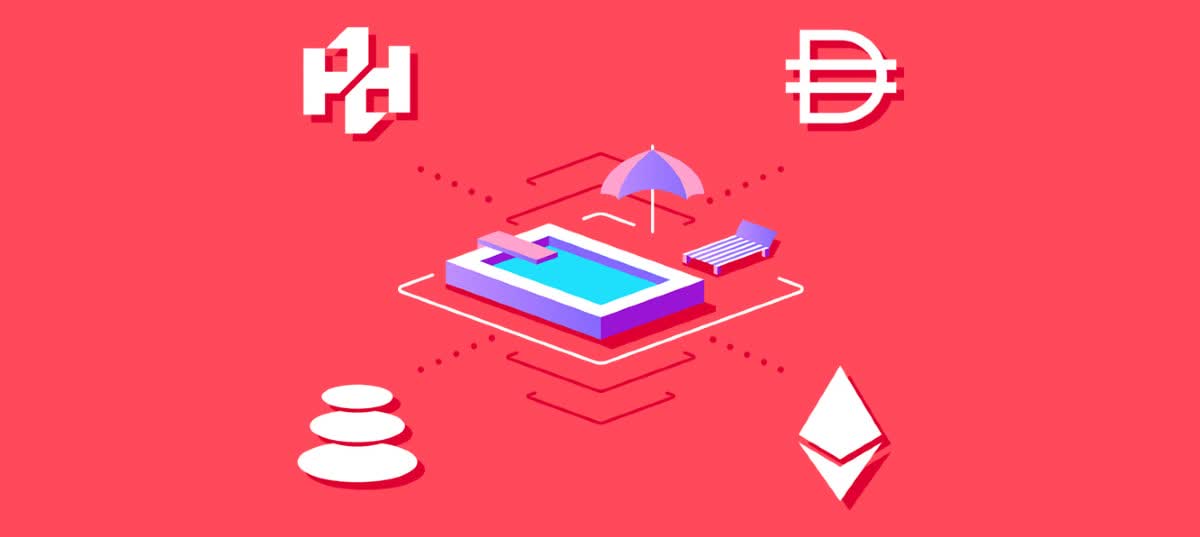
Liquidity Pool
This commission is calculated separately and awarded in proportion to all those people who provide their tokens in liquidity.
This is the main type of earnings from the provision of your tokens to the liquidity pool
In addition, there is another option for farming, in which liquidity providers give their tokens for use in the same way, however, the commission (reward) is not paid from trading commissions, the platform constantly issues (prints) new tokens that liquidity providers can later sell for the purpose of profit-taking.
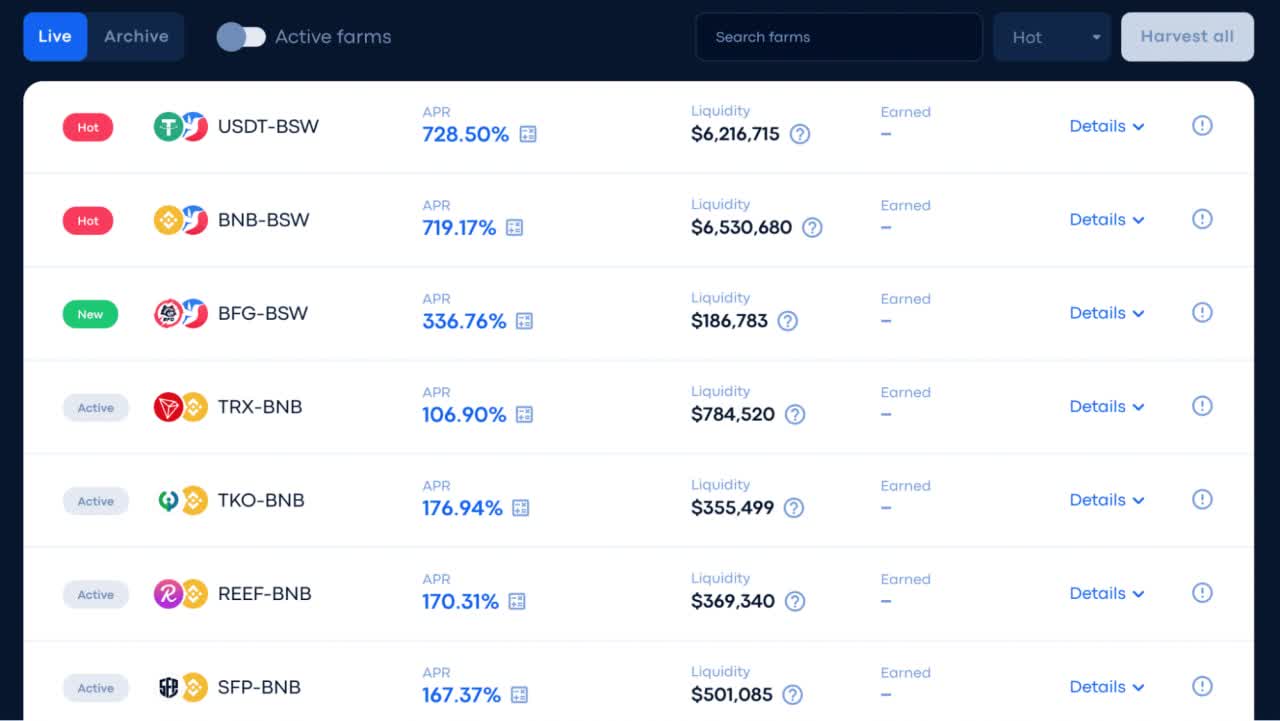
Biswap liquidity pairs back then (check out APRs)
However, in this article, we will not get in-depth on this subject, since our goal for today is to acquaint the reader with the main methods of farming/staking cryptocurrency, that is, to talk about this method of earning in the most general terms.
If you are not a rookie to our website, then you know that we regularly review various farming platforms (Biswap, PancakeSwap, etc), so if you are interested in specific platforms and reviews, you better check out those particular articles.

The world’s most famous DeFi Exchange
So let’s start with the already mentioned DeFi platform PancakeSwap. If you have been farming for a long time, then you know that PancakeSwap is a kind of… “Binance among DeFi crypto exchanges”, to put it mildly.
This is the very first and probably the most standard farming/exchange platform of all possible, with the most standard functionality.
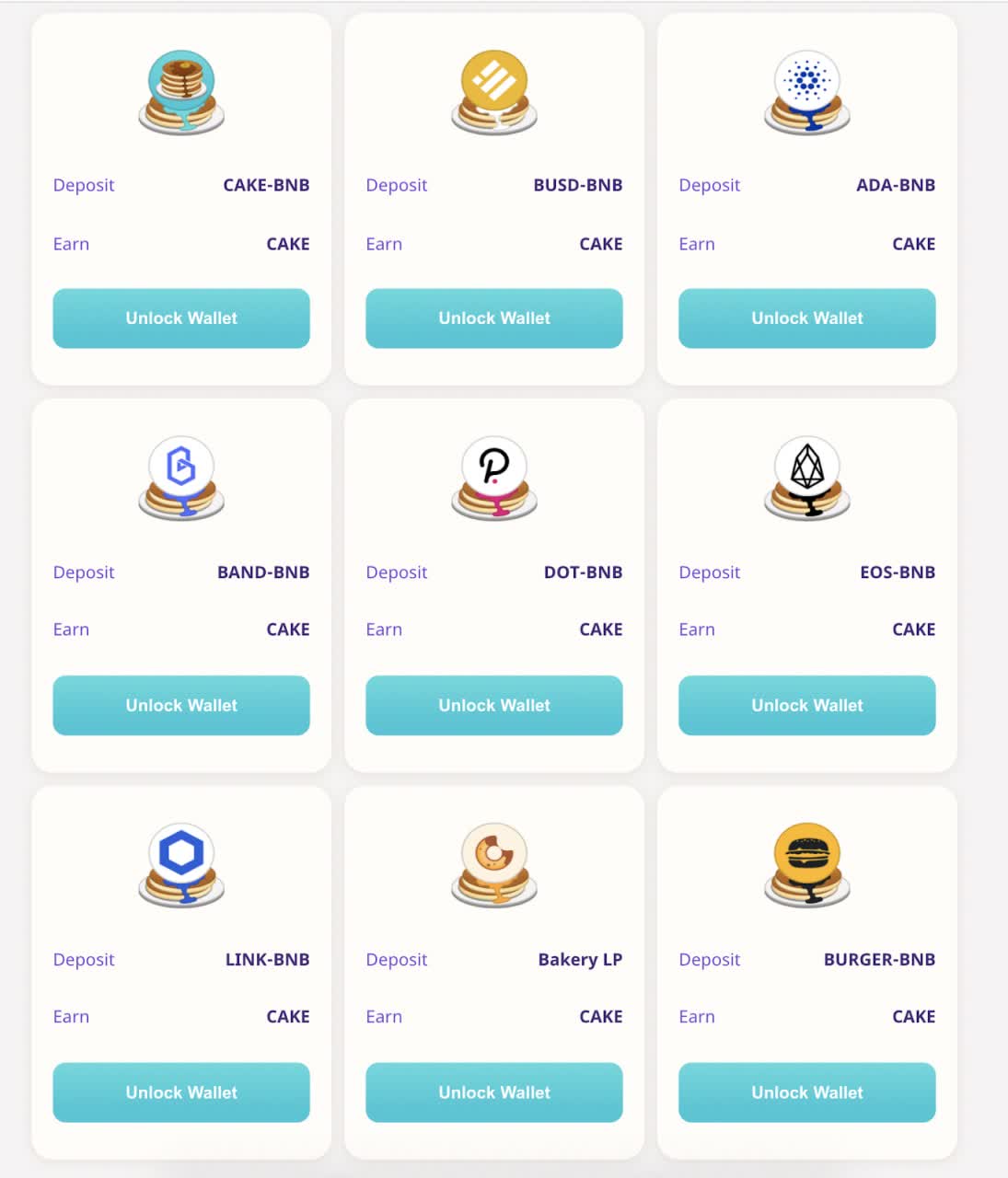
PancakeSwap Liquidity Pairs
Moreover, it is the most beginner-friendly platform, both in terms of interface and in terms of fees. The fact is that, unlike Uniswap, PancakeSwap is located on the Binance Smart Chain (BEP-20), which means that the fees on the network are negligible compared to the fees on the Ethereum network (ERC-20).
Transactions cost from a few cents to couple bucks (although, of course, the total cost will depend on the size of your deposit), that is, even with small start-up capital, you will be very comfortable farming on this platform (as opposed to Ethereum, which we’ll talk about further).
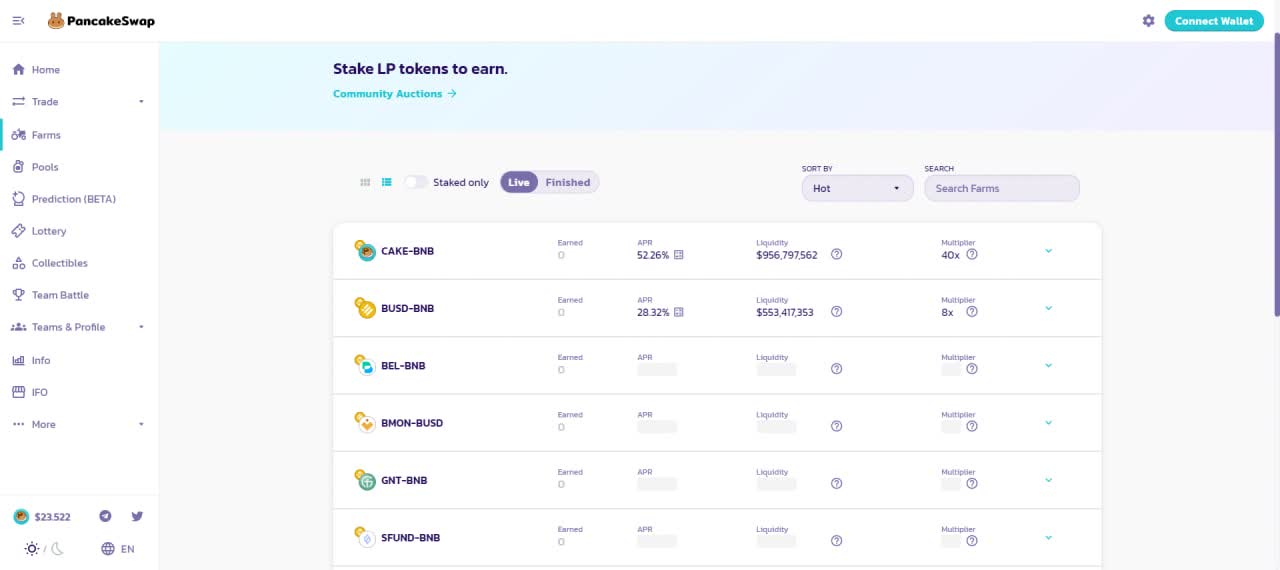
PancakeSwap
So, here we see a list of different pools available for farming, and we see what assets are present in each pool (that is, which two coins we need to “stake” in this or that pool to start farming), also what is the reward for us here paid, and also what kind of liquidity is there (that is, how much money is in the pool in general), and thus, you can immediately determine which of the available farming pools will be the most profitable in terms of…well… profitability.
We have three main options for profitability, which differ quite significantly (in both earnings and risks).
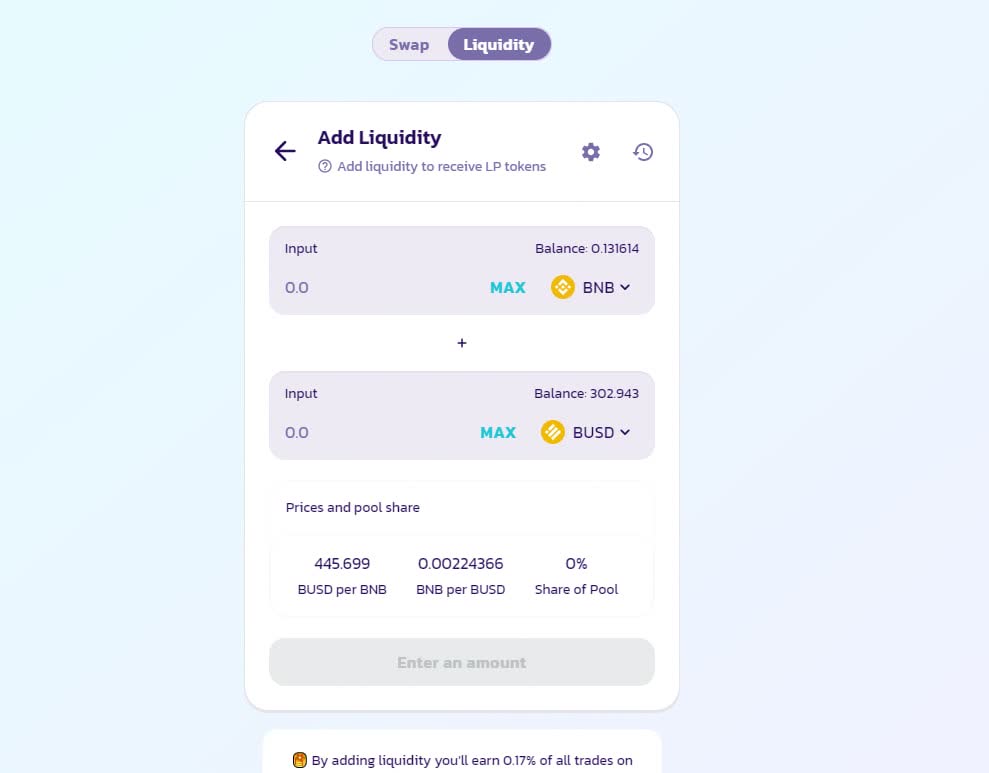
PancakeSwap. Here’s how you add liquidity: simply click on the “Trade” button, switch to the “Liquidity” window and put two coins (that are indicated in the pool’s name) in equal amounts (for the sake of this example, we’ve chosen the BNB/BUSD pair). Then approve the contract, confirm it, receive your LP tokens (Liquidity Pair Tokens) and… congrats, you’re done!
The first option includes pools with a yield of 100 to 250-300 and more percent per annum. In pools with a similar annual yield, liquid pairs are usually formed from two tokens (which tokens are needed for staking is indicated in the name of the pool).
Since these are mainly liquid pairs, consisting of two coins that are not stable coins (that is, coins subject to volatility) over time, rates for both coins can change both in relation to the dollar and relation to each other, then there is, with a price change, coins can be unevenly distributed in relation to each other, and as a result, if you decide to “withdraw” your coins from the pool, you may be in for quite a surprise when the amount of one coin will end up being much smaller than other.
This phenomenon is called “impermanent loss” and it is one of the main pitfalls in such farming methods.
Once again, what is impermanent loss?
This is when we have a very significant change in the rate of assets in relation to the dollar or each other, and accordingly, in the course of this process, we get lower profitability, due to the specific distribution of the number of tokens to each other, when leaving the pool and withdrawing our assets.
There are several ways (including quite accurate ones) to calculate the impermanent loss using special services.
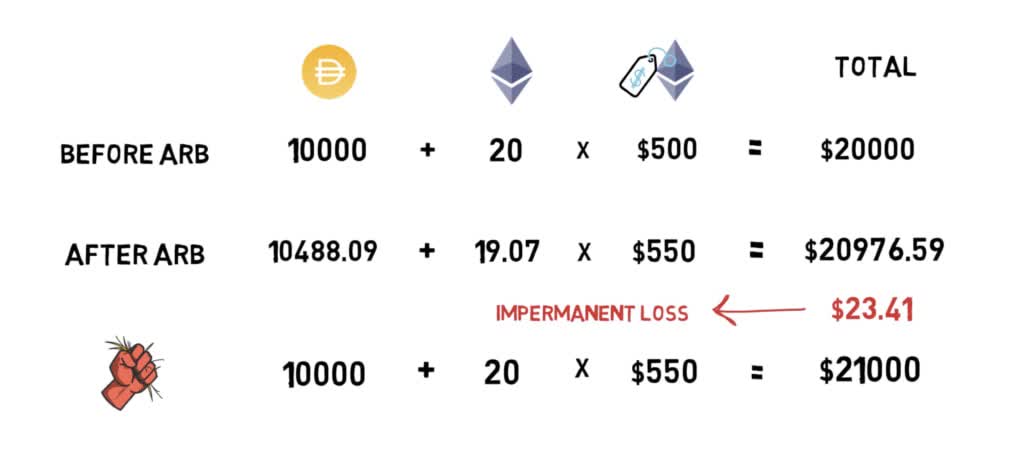
Impermanent Loss Explained
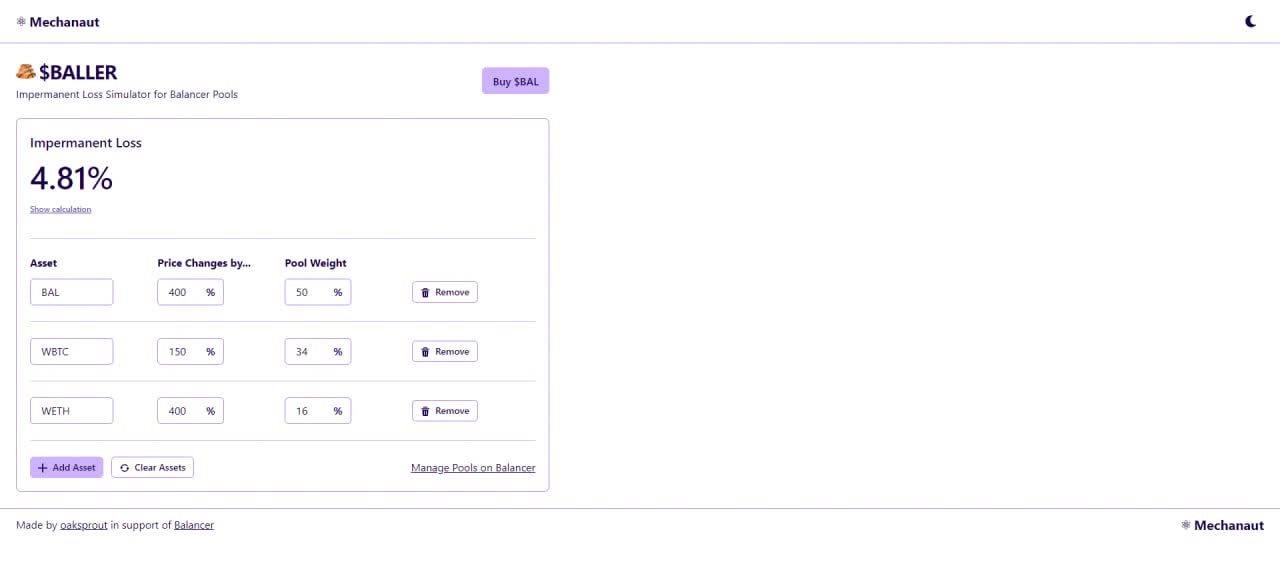
$Baller
This website is called $ BALLER.
Here you can specify assets, indicate the estimated cost of falling or rising assets, and accordingly, based on this data, you can calculate what impermanent loss you will have and how much you will underperform/lose as a result.
The second category of profitability for farming includes pools with no more than 20-50 percent per annum.
Hence, lower profitability with lower risks.
This category includes, for example, Ethereum farming and various stable coins, such as BUSD, USDT, USDC, etc.
As a rule, such a liquid pair will usually have one stable coin, for example, the ETH-USDT pair, which means that in such a pair, only one coin will be subject to volatility (in this case, it is ETH), while the other is equated to a dollar, that is, the risk of impermanent loss, in this case, is reduced by at least half.
Again, this category of farming is low-risk but at the same time low-income. It is suitable for those investors who want to make money with less risk while investing in a coin with a strong fundamental (for example, BTC or ETH).
The third farming option is the good old stable coin farming (USDT / BUSD / USDC) when both coins in a liquid pair are stable coins (we hope there’s no need to explain what stable coins are).
The profitability in this type of farming is the lowest and, as a rule, it only slightly exceeds the annual profitability of some banks, but at the same time it is the most stable and low-risk type of farming.
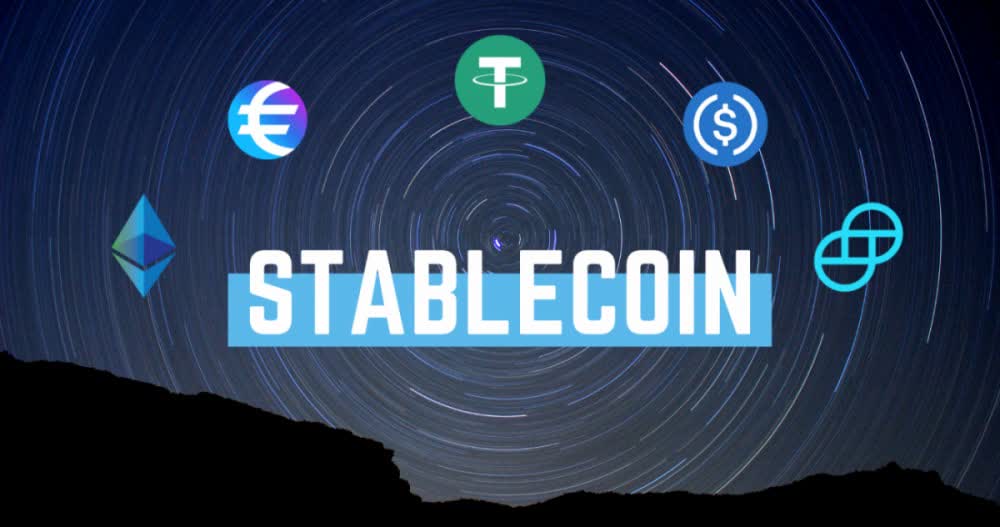
Stablecoin Farming has proved itself as the safest (since there’s no price fluctuations involved) but at the same time - the least profitable. I guess that's how everything in life works, ain’t it? You wanna get to the place safe & sound - you’ll get there slower than everybody else
This type of farming is suitable for those people who’d rather keep their savings than earn.
In any case, the choice towards this or that type of farming depends on your personal investment goals – what risks are you willing to take and how long you are willing to farm, whether you want to get high profitability in a short period of time, paired with the risk from impermanent loss (so that your potential income covers some of your possible losses), or you simply want to farm a safe liquidity pair of stablecoins as long as it’s possible and without much risks involved?
Depending on the criteria, you should first decide on a farming category
It is also very convenient that the profitability in these pools is usually indicated without taking into account “reinvestment”, that is, if you put in a certain amount of money for a year, you will receive about the same indicated percentage (which, of course, is not entirely true, since the interest rate is always a variable value).
That is, it can both fall and grow, depending on how many people farm tokens in this particular pool (accordingly, the “outflow” of people from the pool will also raise the interest rate).
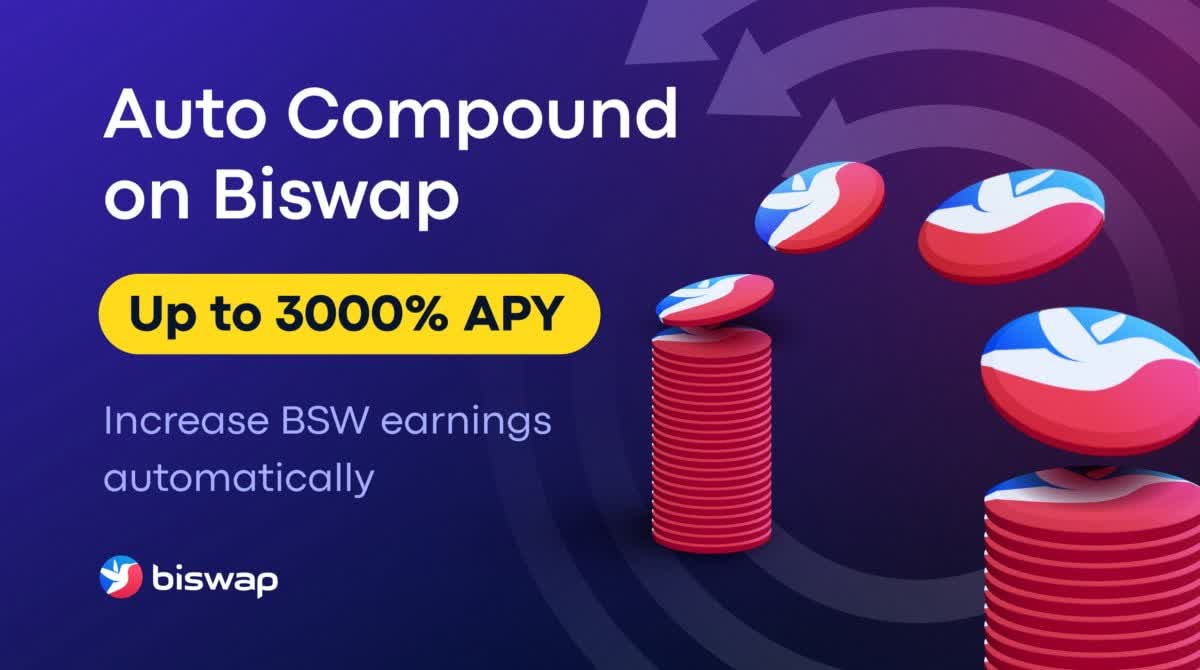
When the “Auto Compound” pool had just been launched, it’d give you around 3000% APY. Insane number… for all those who haven’t seen Biswap’s early manual pool’s APR
If you regularly reinvest your accumulated tokens, your earnings will also grow proportionally, since compound interest comes into play.
In practice, it works in the way that with constant reinvestment, there will be more and more assets in your pool, and each time your profitability will be reckoned with more and more amount.
At the same time, the frequency of reinvestment depends on the blockchain of the network on which the pool of your choice is located.
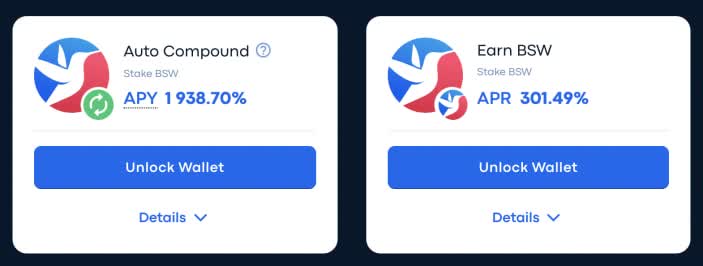
Biswap. “Auto Compound” vs “Manual Pool”
For example, in Biswap I reinvested 2-3 times a day since the network fees are relatively small (at least I did this before the auto compound pool appeared). Someone reinvests once a week or even a month.
In any case, frequent reinvestment on the Binance Smart Chain pays off as we will pay a few cents for the commission.

We gotta talk about ETH Gas Fees...
In the Ethereum network (ERC-20), the situation is somewhat different, and an investor, say, on the Uniswap platform, will have to think over his strategy in advance, taking into account huge commissions.
By and large, farming on the Ethereum network, as well as the subsequent reinvestment, pays off if you have a large deposit (at least a 5-digit number), if the deposit amount is too small, then reinvestment will simply eat up all your profit, which will make farming on the platform unprofitable.
On the Ethereum network, it is best to farm with a large deposit and make rare reinvestments (for example, once a week or even once every two weeks).
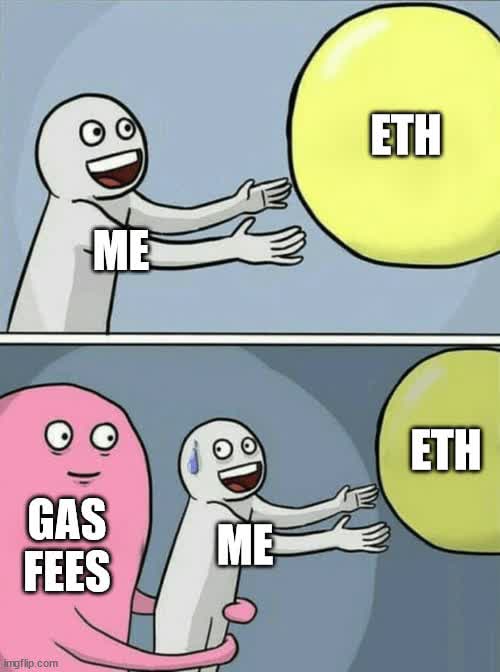
“Just when I thought I was out... they pull me back in!”
Multipliers (multipliers X1, X2, X100, etc.) – do not pay much attention to them, because the percentage of annual profitability is already indicated taking into account these multipliers.
That is, these multipliers already show you what kind of profitability you will receive at the moment, that is, if this multiplier were not there, the percentage of farming, respectively, would be less.
In general, if you want to calculate your profitability, just focus on the percentages, they are already indicated taking into account these multipliers.
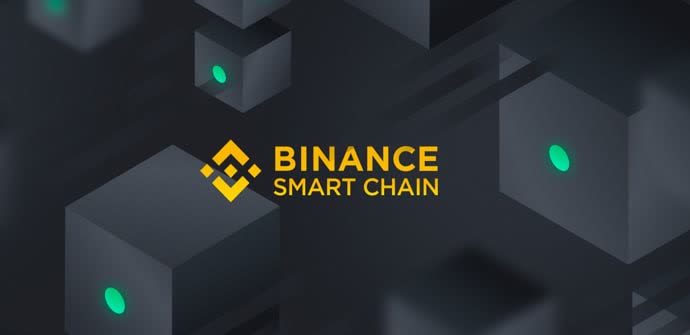
The best (only my opinion!) blockchain in the world BEP-20 FOR LIFE
If you want to send your funds for farming, then first you need to make sure that your tokens are on the same network as the chosen farming platform.
For example, in the case of Biswap or PancakeSwap, you need to deposit tokens on the Binance Smart Chain network. In the case of Uniswap, on the Ethereum blockchain network.

Ethereum network (ERC20)
In this article, we will not explain in detail exactly how to do this, since the material in this article assumes that you already know how and where to buy certain tokens, and is intended to explain in general terms the principle of coin farming/staking.
We will only remind you that we have repeatedly written about various farming platforms previously, and those articles also included a section on the basic functionality of these platforms’ interfaces. If you are interested, we recommend that you first familiarize yourself with said articles.
Anyway, let’s talk about the “staking” of coins, which is also present on all the above-mentioned farming platforms, including PancakeSwap.
What is the difference between “staking” and “farming”? Here, in fact, everything is simple: if, in case of “farming”, we use a pair of assets (that is, two different coins), which can be volatile both relative to each other and relative to the dollar exchange rate, then in “staking” only one asset participates (usually it is the native token of the platform).
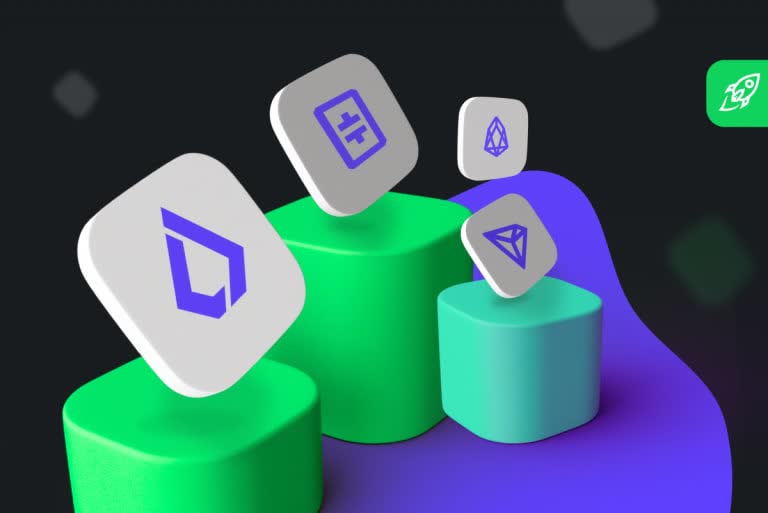
Tokens on the platform
That is, in “staking” we simply invest this previously purchased asset and receive our profit, in the form of annual profitability’s percentage.
For example, on the Biswap platform, in the “launchpools” section, there are staking of various coins, the first of which was the manual BSW coin staking – the native token of the platform.
To stake BSW, you first had to purchase a coin on the Biswap exchange, and then stake it into the appropriate pool to start farming.
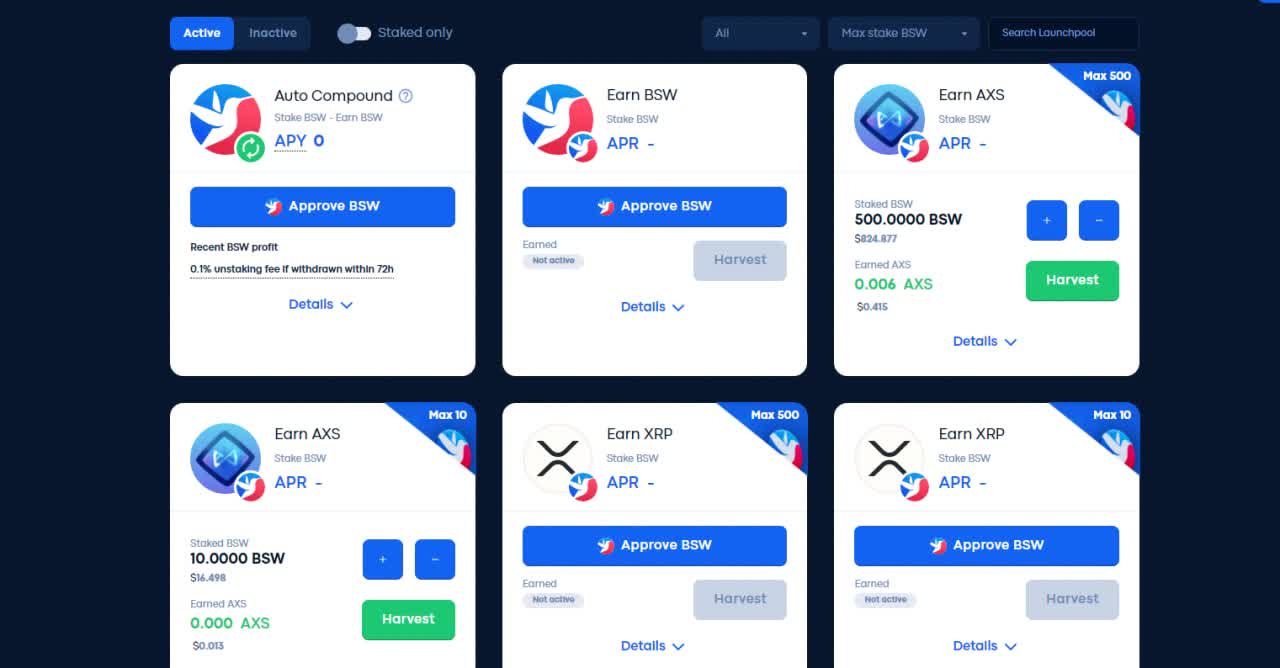
Biswap Launchpools
Staking has several benefits. Firstly, the main advantage is that here we will not have an impermanent loss, since only one asset is involved in farming, that is, it will not fluctuate relative to another coin, only relative to the dollar rate.
That is, if you believe in the growth of this or that coin and plan to hold the coin for a long time, then what prevents you from “staking” this coin into the appropriate liquidity pool, increasing the number of these coins, so that you could sell your assets eventually when the token price rises?
In this case, staking is an extremely profitable strategy.
As a rule, the interest here is slightly less than on highly profitable farming, but the risks are also reduced significantly. Basically, the only risk is that people will sell the token and the price of that token will fall and your assets will be depreciated.
However, practice shows that this does not happen all at once, overnight – usually the price is slowly “averaged” to a certain value (either lower or higher), and even in the event of sharp “downfalls” of the token rate, some part of investors will still raise the price by purchasing a coin on this abrupt downfall, by buying the DIP.
That’s it for today, folks
We believe that valuable information is best absorbed partly, so we’ve decided to split this topic into two parts.
In the next article (“The Curious Case of Yield Farming Part 2”) we’re gonna introduce to y’all various DeFi exchanges and ways for Yield Farming, starting from Uniswap Exchange.
Stay tuned!
